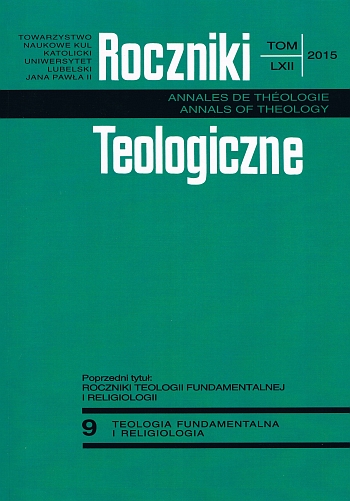Skąd Kościół? Od teologii liberalnej do Antona Vögtle
Where does the Church Come From? From Liberal Theology to Anton Vögtle
Author(s): Krystian KałużaSubject(s): Systematic Theology
Published by: Towarzystwo Naukowe KUL & Katolicki Uniwersytet Lubelski Jana Pawła II
Keywords: Jesus;Holy Spirit;God's Kingdom;God's People;Church;Genesis of the Church;ecclesiogenesis;ecclesiology;“first consensus”;“the new consensus”;
Summary/Abstract: The article presents the evolution of the discussion about the origins of the Church from liberal theology to Anton Vögtle. Authors of the “first consensus” of the historical-liberal school (Harnack, Loisy) questioned the presence of any form of organised Church in the life and teaching of Jesus. The “new consensus” of the eschatological New Testament school (Cullmann, Oepke, Beetz) described the Church as God's People of the ultimate times, whose foundations are the life and teaching of earthly Jesus. The ultimate foundation of the Church occurred during Jesus' death and resurrection. It was confirmed by an eschatological gift of pouring of the Holy Spirit on the day of the Pentecost. The success of the “new consensus”, which is also linked to traditional Catholic ecclesiology, was seriously undermined by Bultmann. Later theological writing (Petersen, Vögtle) excludes earthly Jesus (or at least some of His actions) from the formative period of the Church and point to the post-Paschal period. The resurrected Lord, through pouring of the Holy Spirit and cooperation (synergy) with His disciples, establishes and builds up His Church. In this respect the Church is not as much a ready-made establishment but a process (“permanent ecclesiogenesis”). Its origins are found in the relationship between Jesus and the idea of God's Kingdom, His disciples, and in the mystery of His death and Resurrection.
Journal: Roczniki Teologiczne
- Issue Year: 62/2015
- Issue No: 09
- Page Range: 101-130
- Page Count: 30
- Language: Polish

